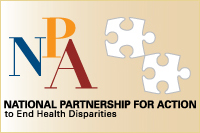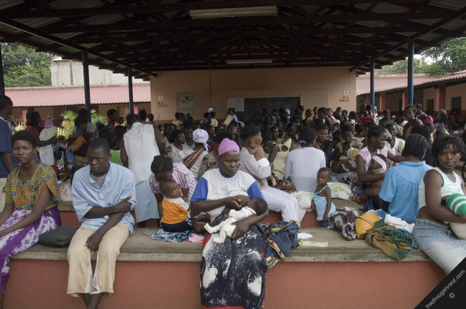Publicly available datasets relevant to research on health disparities.
The Federal Interagency Health Equity Team, part of the National Partnership for Action to End Health Disparities, has developed a Compendium resource of publicly available data relevant to research and programs aiming to end health disparities – Compendium of Publicly Available Datasets. Visit here to learn more.
Why do we keep vaccinating against measles?
Kathryn H. Jacobsen, MPH, PhD
 Measles has been very rare in the United States for the past 20 years, with fewer than 1000 cases annually, but globally measles remains one of the major killers of children. The World Health Organization (WHO) estimates that 145,700 children died from measles in 2013. The Global Burden of Disease (GBD) project estimates a lower number of about 95,600 deaths. But even that lower number represents a huge tragedy: it means nearly 100,000 babies and young children are dying every year from a vaccine-preventable infection. About 1 or 2 children die out of every 1000 children infected with measles—or more, in places where many children are undernourished and vitamin A deficient—which means that millions of people around the world still contract measles each year.
Measles has been very rare in the United States for the past 20 years, with fewer than 1000 cases annually, but globally measles remains one of the major killers of children. The World Health Organization (WHO) estimates that 145,700 children died from measles in 2013. The Global Burden of Disease (GBD) project estimates a lower number of about 95,600 deaths. But even that lower number represents a huge tragedy: it means nearly 100,000 babies and young children are dying every year from a vaccine-preventable infection. About 1 or 2 children die out of every 1000 children infected with measles—or more, in places where many children are undernourished and vitamin A deficient—which means that millions of people around the world still contract measles each year.
Suppose that the United States stopped vaccinating against measles. What would happen? Because of cases imported by international travelers, measles would quickly return to America. Measles is one of the most contagious viruses. About 90% of people not immune to measles will become infected if they are exposed to someone with measles. If a large proportion of children in the U.S. were not protected by immunization, measles would rapidly spread across the country. And some of the children who became infected would die.
We can estimate the number of deaths that would occur if we stopped vaccinating by referring to data from the U.S. before the MMR vaccine was widely used. In 1960, there were more than 500,000 cases of measles and about 450 measles-related deaths. Since the population of children less than 5 years old is about the same—about 20 million—now as it was in 1960, we could expect 450 measles-related deaths per year in young children. And thousands of children might survive measles but be left with blindness, hearing loss, or learning disabilities due to measles encephalitis.
And the number of deaths might be higher than 450 now. Modern medical advances keep kids with serious illnesses alive (thankfully), but they also have led to increased numbers of children who are immunocompromised due to cancer treatment or other medical challenges. Some of the most poignant pleas for parents to vaccinate their kids against measles is coming from the moms and dads of children with life-threatening diseases. Their children are at risk of dying because they cannot be vaccinated against measles. They must rely on “herd immunity,” the protection everyone gets, especially the most vulnerable, when the vast majority of the population has been vaccinated.
The U.S. Centers for Disease Control and Prevention (CDC) has recently launched a new measles website. Adults who are not sure of their vaccination status and parents who have questions about childhood vaccinations can check out the scientific information provided there. It is always advisable to consult with a primary care provider or a pediatrician about preventive health options for individuals and families, but the general recommendation is for children to receive a first dose of MMR vaccine at 12-15 months of age and a second dose at 4-6 years of age. International travelers can have a blood test to check their immune status and confirm that they are protected before their trips so they will not bring measles home with them as an unwelcome souvenir. Measles can be a very serious infection, and vaccinations save lives.
Dr. Tony Yang Speaks Out about the Measles Outbreak
Read more here.
A Recurring Epidemic: Ebola by Treniese Polk
September 24, 2014. In this article, Treniese Polk, CHPRE Project Manager, discusses the Ebola epidemic, gives context for the patient experience in a health system of a developing country, and explains how infectious diseases thrive under the climate and conditions of developing health systems, thus propelling epidemics. At the close of the article, Polk proposes forward-thinking strategies to combat future epidemics. Click here to read the full article.



